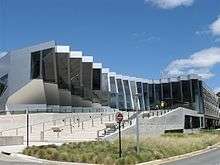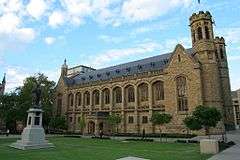Tertiary education in Australia
| ||||||||||||
| From top left to right: The University of Queensland, Brisbane; Macquarie University, Sydney; Royal Melbourne Institute of Technology, Melbourne; University of Melbourne, Melbourne; University of New South Wales, Sydney; University of South Australia, Adelaide; University of Western Australia, Perth; University of Sydney, Sydney;Queensland University of Technology, Brisbane; Australian National University, Canberra; University of Adelaide, Adelaide; Swinburne University of Technology, Melbourne. |
Tertiary education in Australia consists of both government and private institutions. A higher education provider is a body that is established or recognised by or under the law of the Australian Government, a state, or the Department of Education, Employment and Workplace Relations.[1]
There are 43 universities in Australia: 40 public universities, two international universities, and one private specialty university.[2]
Allocation of responsibilities
Decision-making, regulation and governance for higher education are shared among the Australian Government, the state and territory governments and the institutions themselves. Some aspects of higher education are the responsibility of states and territories. In particular, most universities are established or recognised under state and territory legislation. States and territories are also responsible for accrediting non-self-accrediting higher education providers.[1]
Funding
The Australian Government has the primary responsibility for public funding of higher education. The Higher Education Support Act 2003 sets out the details of Australian Government funding and its associated legislative requirements. Australian Government funding support for higher education is provided largely through:
- the Commonwealth Grant Scheme which provides for a specified number of Commonwealth supported places each year
- the Higher Education Loan Programme (HELP) arrangements providing financial assistance to students
- the Commonwealth Scholarships and
- a range of grants for specific purposes including quality, learning and teaching, research and research training programmes
The Department of Education has responsibility for administering this funding, and for developing and administering higher education policy and programs.
Universities
In Australia, universities are self-accrediting institutions and each university has its own establishment legislation (generally state and territory legislation) and receive the vast majority of their public funding from the Australian Government, through the Higher Education Support Act 2003. The Australian National University, the Australian Film, Television and Radio School and the Australian Maritime College are established under Commonwealth legislation. The Australian Catholic University is established under corporations law. It has establishment Acts in New South Wales and Victoria. Many private providers are also established under corporations law. As self-accrediting institutions, Australia's universities have a reasonably high level of autonomy to operate within the legislative requirements associated with their Australian Government funding.[1]
Australian universities are represented through the national universities' lobbying body Universities Australia (previously called Australian Vice-Chancellors' Committee). Eight universities in the list have formed a group in recognition of their recognized status and history, known as the 'Group of Eight' or 'Go8'. Other university networks have been formed among those of less prominence (e.g., the Australian Technology Network and the Innovative Research Universities). Academic standing and achievements vary across these groups and student entry standards also vary with the Go8 universities having the highest standing in both categories.
Technical and further education and registered training organisation
The various state-administered institutes of technical and further education (TAFE) across the country are the major providers of vocational education and training (VET) in Australia. TAFE institutions generally offer short courses, Certificates I, II, III, and IV, diplomas, and advanced diplomas in a wide range of vocational topics. They also sometimes offer higher education courses, especially in Victoria.
In addition to TAFE institutes there are many registered training organisations (RTOs) which are privately operated. In Victoria alone there are approximately 1100. They include:
- commercial training providers
- the training department of manufacturing or service enterprises
- the training function of employer or employee organizations in a particular industry
- Group training companies
- community learning centers and neighborhood houses
- secondary colleges providing VET programs
In size these RTOs vary from single-person operations delivering training and assessment in a narrow specialization, to large organizations offering a wide range of programs. Many of them receive government funding to deliver programs to apprentices or trainees, to disadvantaged groups, or in fields which governments see as priority areas.
VET programs delivered by TAFE institutes and private RTOs are based on nationally registered qualifications, derived from either endorsed sets of competency standards known as training packages, or from courses accredited by state/territory government authorities. These qualifications are regularly reviewed and updated. In specialised areas where no publicly owned qualifications exist, an RTO may develop its own course and have it accredited as a privately owned program, subject to the same rules as those that are publicly owned.
All trainers and assessors delivering VET programs are required to hold a qualification known as the Certificate IV in Training and Assessment (TAA40104) or the more current TAE40110,[3] or demonstrate equivalent competency. They are also required to have relevant vocational competencies, at least to the level being delivered or assessed. All TAFE institutes and private RTOs are required to maintain compliance with a set of national standards called the Australian Quality Training Framework (AQTF), and this compliance is monitored by regular internal and external audits.
Classification of tertiary qualifications
In Australia, the classification of tertiary qualifications is governed in part by the Australian Qualifications Framework (AQF), which attempts to integrate into a single classification all levels of tertiary education (both vocational and higher education), from trade certificates to higher doctorates. However, as Australian universities largely regulate their own courses, the primary usage of AQF is for vocational education. In recent years there have been some informal moves towards standardization between higher education institutions.
History
To World War II
The first university established in Australia was the University of Sydney in 1850, followed in 1853 by the University of Melbourne. Prior to federation in 1901 two more universities were established: the University of Adelaide (1874) and the University of Tasmania (1890). At the time of federation, Australia's population was 3,788,100 and there were fewer than 2,652 university students. Two other universities were established soon after federation: the University of Queensland (1909) and the University of Western Australia (1911). All of these universities were controlled by State governments and were largely modeled on the traditional British university system and adopted both architectural and educational features in line with the (then) strongly influential 'mother' country. In his paper Higher Education in Australia: Structure, Policy and Debate[4] Jim Breen observed that in 1914 only 3,300 students (or 0.1% of the Australian population) were enrolled in universities. In 1920 the Australian Vice-Chancellors' Committee (AVCC) was formed to represent the interests of these six universities.
The 'non-university' institutions originally issued only trade/technical certificates, diplomas and professional bachelor's degrees. Although universities were differentiated from technical colleges and institutes of technology through their participation in research, Australian universities were initially not established with research as a significant component of their overall activities. For this reason, the Australian Government established the Commonwealth Scientific and Industrial Research Organisation (CSIRO) in 1926 as a backbone for Australian scientific research. The CSIRO still exists today as a legacy, despite the fact that it essentially duplicates the role now undertaken by Australian universities.
Two university colleges and no new universities were established before World War II. On the eve of the war, Australia's population reached seven million. The university participation level was relatively low. Australia had six universities and two university colleges with combined student numbers of 14,236. 10,354 were degree students (including only 81 higher degree students) and almost 4,000 sub-degree or non-award students.
World War II to 1972
In 1942, the Universities Commission was created to regulate university enrolments and the implementation of the Commonwealth Reconstruction Training Scheme (CRTS).
After the war, in recognition of the increased demand for teachers for the "baby boom" generation and the importance of higher education in national economic growth, the Commonwealth Government took an increased role in the financing of higher education from the States. In 1946 the Australian National University was created by an Act of Federal Parliament as a national research only institution (research and postgraduate research training for national purposes). By 1948 there were 32,000 students enrolled, under the impetus of CRTS.
In 1949 the University of New South Wales was established.
During the 1950s enrollments increased by 30,000 and participation rates doubled.
In 1950 the Mills Committee Inquiry into university finances, focusing on short-term rather than long-term issues, resulted in the State Grants (Universities) Act 1951 being enacted (retrospective to 1 July 1950). It was a short-term scheme under which the Commonwealth contributed one quarter of the recurrent costs of "State" universities.
In 1954 the University of New England was established. In that year, Robert Menzies established the Committee on Australian Universities. The Murray Committee Inquiry of 1957 found that financial stringency was the root cause of the shortcomings across universities: short staffing, poor infrastructure, high failure rates, weak honours and postgraduate schools. It also accepted the financial recommendations in full, which led to increased funds to the sector and establishment of Australian Universities Commission (AUC) and the conclusion that the Commonwealth Government should accept greater responsibility for the States’ universities.
In 1958 Monash University was established. States Grants (Universities) Act 1958 allocated funding to States for capital and recurrent expenditure in universities for the triennial 1958 to 1960. In 1959 the Australian Universities Commission Act 1959 established the AUC as a statutory body to advise the Commonwealth Government on university matters. Between 1958 and 1960 there was more than a 13% annual increase in university enrollments. By 1960 there were 53,000 students in ten universities. There was a spate of universities established in the 1960s and 70s: Macquarie University (1964), La Trobe University (1964), the University of Newcastle (1965), Flinders University (1966), James Cook University (1970), Griffith University (1971), Deakin University (1974), Murdoch University (1975), and the University of Wollongong (1975). By 1960, the number of students enrolled in Australian Universities had reached 53,000. By 1975 there were 148,000 students in 19 universities.
After 1972
Until 1973 university tuition was funded either through Commonwealth scholarships which were based on merit or through fees. Tertiary education in Australia was structured into three sectors:
- Universities
- Institutes of technology (a hybrid between a university and a technical college)
- Technical colleges
During the early 1970s, there was a significant push to make tertiary education in Australia more accessible to working and middle class people. In 1973, the Whitlam Labor Government abolished university fees. This increased the university participation rate.
In 1974 the Commonwealth assumed full responsibility for funding higher education (universities and CAEs) and established the Commonwealth Tertiary Education Commission (CTEC) which had an advisory role and responsibility for allocating government funding among universities. However, in 1975, in the context of federal political crisis and economic recession, triennial funding of universities was suspended. Demand remained with growth directed to CAEs and State-controlled TAFE colleges.
1980s
By the mid-1980s, it became the consensus of both major parties that the concept of 'free' tertiary education in Australia was untenable due to the increasing participation rate. Ironically, a subsequent Labor Government (the Bob Hawke/Paul Keating Government) was responsible for gradually re-introducing fees for university study. In a relatively innovative move, the method by which fees were re-introduced proved to be a system accepted by both Federal political parties and consequently is still in place today. The system is known as the Higher Education Contribution Scheme (HECS) and enables students to defer payment of fees until after they commence professional employment, and after their income exceeds a threshold level – at that point, the fees are automatically deducted through income tax.
By the late 1980s, the Australian tertiary education system was still a three-tier system, composed of:
- All tertiary institutions established as universities by acts of parliament (e.g. Sydney, Monash, La Trobe, Griffith)
- A collection of institutes of technology (such as the Royal Melbourne Institute of Technology (RMIT))
- A collection of colleges of Technical and Further Education (TAFE)
However, by this point, the roles of the universities, institutes of technology and the CSIRO had also become blurred. Institutes of technology had moved from their traditional role of undergraduate teaching and industry-consulting towards conducting pure and applied research. They also had the ability to award degrees through to Doctor of Philosophy (PhD) level.
For a number of reasons, including clarifying the role of institutes of technology, the Federal Minister for Education of the time (John Dawkins) created the unified national system, which compressed the former three-tier tertiary education system into a two-tier system. This required a number of amalgamations and mergers between smaller tertiary institutions, and the option for institutes of technology to become universities. As a result of these reforms, institutes of technology disappeared and were replaced by a collection of new universities. By the early 1990s, the two-tier tertiary education was in place in Australia – university education and Technical and Further Education (TAFE). By the early years of the new millennium, even TAFE colleges were permitted to offer degrees up to bachelor's level.
The 1980s also saw the establishment of Australia's first private university, Bond University. Founded by businessman Alan Bond, this Gold Coast institution was granted its university status by the Queensland government in 1987. Bond University now awards diplomas, certificates, bachelor's degrees, masters and doctorates across most disciplines.
1990s
For the most part, up until the 1990s, the traditional Australian universities had focused upon pure, fundamental, and basic research rather than industry or applied research – a proportion of which had been well supported by the CSIRO which had been set up for this function. Australians had performed well internationally in pure research, having scored almost a dozen Nobel Prizes[5] as a result of their participation in pure research.
In the 1990s, the Hawke/Keating Federal Government sought to redress the shortcoming in applied research by creating a cultural shift in the national research profile. This was achieved by introducing university scholarships and research grants for postgraduate research in collaboration with industry, and by introducing a national system of Cooperative Research Centres (CRCs). These new centres were focused on a narrow band of research themes (e.g., photonics, cast metals, etc.) and were intended to foster cooperation between universities and industry. A typical CRC would be composed of a number of industry partners, university partners and CSIRO. Each CRC would be funded by the Federal Government for an initial period of several years. The total budget of a CRC, composed of the Federal Government monies combined with industry and university funds, was used to fund industry-driven projects with a high potential for commercialization. It was perceived that this would lead to CRCs becoming self-sustaining (self-funding) entities in the long-term, although this has not eventuated. Most Australian universities have some involvement as partners in CRCs, and CSIRO is also significantly represented across the spectrum of these centres. This has led to a further blurring of the role of CSIRO and how it fits in with research in Australian universities.
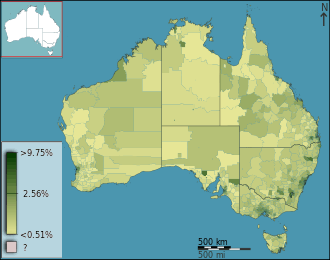
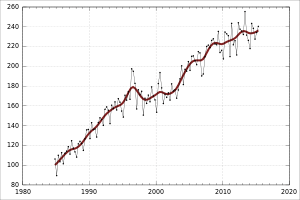
2000s
The transition from a three-tier tertiary education system to a two-tier system was not altogether successful. By 2006, it became apparent that the long term problem for the unified national system was that newer universities could not build up critical mass in their nominated research areas - at the same time, their increase in research level deprived traditional universities of high calibre research-oriented academics. These issues were highlighted by the Melbourne Institute of Applied Economic and Social Research in 2006. The available money was spread across all universities, and even the traditional universities had a diminished capacity to maintain critical mass. The Melbourne Institute figures, based upon Government (DEST) data, revealed that many of the newer universities were scoring "zeros" (on a scale of 0 - 100) in their chosen research fields (i.e., were unable to achieve the threshold level of activity required).
Criticism
Problems with the new mass marketing of academic degrees include declining academic standards,[6] increased teaching by sessional lecturers, large class sizes, declining values of some types of degrees due to an oversupply of graduates, and one out of five domestic students quitting after their first year. Also, students' rate of return on their large investment in time and money depends to a great extent on their fields of study. On average, graduates in medicine, the STEM subjects and business administration could expect to earn the most, while graduates in the humanities and the fine arts could expect to earn the least.[7][8][9]
Governance
With a larger proportion of university turnover derived from non-Government funds,[10][11] the role of university vice chancellors moved from one of academic administration to strategic management. However, university governance structures remained largely unchanged from their 19th-century origins. All Australian universities have a governance system composed of a vice-chancellor (chief executive officer); chancellor (non-executive head) and university council (governing body). However, unlike a corporate entity board, the university council members have neither financial nor vested specific interests in the performance of the organisation (although the state government is represented in each university council, representing the state government legislative role in the system).
Melbourne University Private venture
The late 1990s and early years of the new millennium therefore witnessed a collection of financial, managerial and academic failures across the university system – the most notable of these being the Melbourne University Private venture, which saw hundreds of millions of dollars invested in non-productive assets, in search of a 'Harvard style' private university that never delivered on planned outcomes. This was detailed in a book (Off Course)[12] written by former Victorian State Premier John Cain (junior) and co-author John Hewitt who explored problems with governance at the University of Melbourne, arguably one of the nation's most prestigious universities.
Federal Government quality measures
The Australian Federal Government has established two quality systems for assessing university performance. These are the Tertiary Education Quality and Standards Agency (TEQSA) and Excellence in Research for Australia (ERA).
The TEQSA reviews of universities essentially look at processes, procedures and their documentation. The TEQSA exercise, largely bureaucratic rather than strategic, is currently moving towards its second round of assessments, with all Australian universities having seemingly received mixed (but generally positive) results in the first round. TEQSA's shortcoming is that it does not specifically address issues of governance or strategic planning in anything other than a bureaucratic sense. In the April 2007 edition of Campus Review,[13] the Vice Chancellor of the University of New South Wales, Fred Hilmer, criticized both AUQA (the agency before it became TEQSA) and the Research Quality Framework (a precursor to the ERA that was discarded before rollout):
"... singling out AUQA, Hilmer notes that while complex quality processes are in place, not one institution has lost its accreditation - 'there's never been a consequence - so it's just red tape...'"
"...The RQF is not a good thing - it's an expensive way to measure something that could be measured relatively simply. If we wanted to add impacts as one of the factors, then let's add impact. That can be achieved simply without having to go through what looks like a $90 million dollar exercise with huge implementation issues."
The RQF (scrapped with the change in government in 2007) was modeled on the British Research Assessment Exercise (RAE) system, and was intended to assess the quality and impact of research undertaken at universities through panel-based evaluation of individual research groups within university disciplines. Its objective was to provide government, industry, business and the wider community with an assurance that research quality within Australian universities had been rigorously assessed against international standards. Assessment was expected to allow research groups to be benchmarked against national and international standards across discipline areas. If successfully implemented, this would have been a departure from the Australian Government’s traditional approach to measuring research performance exclusively through bibliometrics. The RQF was fraught with controversy, particularly because the cost of such an undertaking (using international panels) and the difficulty in having agreed definitions of research quality and impact. The Labor government which scrapped the RQF has yet to outline any system which will replace it, stating however that it will enter into discussions with higher education providers, to gain consensus on a streamlined, metrics-driven approach.
International reputations
Australian universities usually feature well in the top 100 international universities as ranked by the Academic Ranking of World Universities. The three universities which regularly appear in these lists are the Australian National University, the University of Melbourne and the University of Queensland.[14] The ANU, Melbourne, Sydney, Queensland, Monash, UNSW and UWA also rank highly in the Times Higher World University Rankings, which are more Anglo-centric in their composition. In 2011-2012, 7 Australian universities were ranked amongst the world's top 200.[15]
See also
- Academic grading in Australia
- Academic ranks in Australia
- University and college admission in Australia
- List of universities in Australia by enrollment
- Tertiary education fees in Australia
- Skilling Australia Foundation
References
- 1 2 3 "Overview". Department of Education, Employment and Workplace Relations. Retrieved 2010-07-13.
- ↑ "Universities and Higher Education - Study In Australia". Australian Government.
- ↑ http://training.gov.au/Training/Details/TAE40110
- ↑ Breen, Jim (December 2002). "Higher Education in Australia: Structure, Policy & Debate". Monash University.
- ↑ "The White Hat Guide to Australian Nobel Prize Winners". White Hat. 1 January 2014. Retrieved 5 July 2014.
- ↑ Foster, Gigi (20 April 2015). "The slide of academic standards in Australia: A cautionary tale". The Conversation. Retrieved 24 September 2015.
- ↑ Schmidt, Lucinda (30 May 2013). "A Matter of Degrees". Sydney Morning Herald. Fairfax Media. Retrieved 27 November 2013.
- ↑ Papadopoulos, Toli (11 July 2014). "Overqualified and underemployed: meet Australia's graduates". Business Spectator. Retrieved 13 September 2014.
- ↑ Knott, Matthew (30 December 2014). "Work and pay prospects for graduates deteriorated in 2014, a survey shows". Sydney Morning Herald. Fairfax Media. Retrieved 1 January 2015.
- ↑ Marginson, S. National system reform in global context: The case of Australia. Reforms and consequences in higher education system: An international symposium, National Centre of Sciences, Hitotubashi Chiyoda-ku, Tokyo, 2009.
- ↑ Marginson, S. Rethinking academic work in the global era. Journal of Higher Education Policy and Management, 22(1), 2000, p. 1-12.
- ↑ Cain, John; Hewitt, John (2004), Off course: From public place to marketplace at Melbourne University, Scribe
- ↑ Campus Review
- ↑ Dodd, Tim (16 August 2014). "Sydney Uni drops out of top 100; Melbourne Uni rises". Financial Review. Fairfax Media. Retrieved 17 August 2014.
- ↑ "Top Universities in Oceania 2011-2012". Times Higher Education. Retrieved 11 June 2012.
External links
- Australian Universities Guide
- Graduate Careers Australia
- Graduate & Internship Jobs in Australia
- Quality Indicators for Learning and Teaching Australian government website
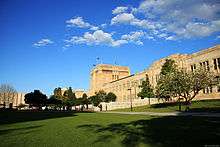
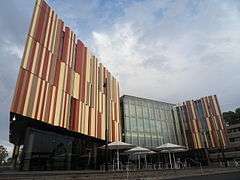

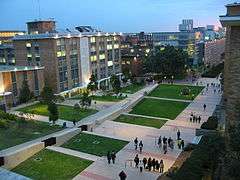
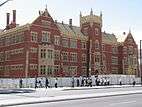
.jpg)


